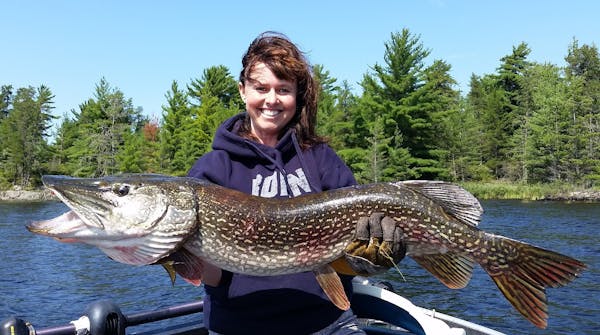A funny thing happened when Minnesota Department of Natural Resources fisheries scientists John Hoxmeier and Doug Dieterman documented the decadeslong population trend of brook trout in southeast Minnesota.
The study period covered the early 1980s to 2017, during which air temperatures rose in the southeast, as they did throughout the state and much of the nation. Certainly, some lake and river temperatures rose correspondingly.
Assuming those temperature increases continue, they could threaten some of the state's important warm-water fish such as walleyes, as well as ciscoes, yellow perch and other prey species.
Wholly dependent on very cold water, brook trout are perhaps Minnesota's most vulnerable finned species to ever-warming temperatures.
Yet Hoxmeier and Dieterman found in their study that in East Indian Creek in the southeast's "Driftless Area,'' brook trout in recent decades have actually increased in number and size, not decreased, and that they've displaced brown trout.
"Brook trout in the southeast also have expanded their range,'' Hoxmeier said. "In the 1970s, 3 percent of our southeast streams had brook trout. Today, 68 percent of streams in the same area have brook trout.''
The region's improved land conservation practices have contributed to the brook trout rebound by lowering stream-water temperatures. Contour planting, grass waterways and riparian buffer strips are increasingly deployed by the region's landowners to conserve soil and decrease runoff. Additionally, more of the region is forested than was a few decades ago.
"Also, we've been in a wet cycle, meaning we've had more rain, and the conservation practices are helping the water to infiltrate the ground and ultimately reach the region's confined aquifers,'' Hoxmeier said.
Southeast rainwater seeping into the ground might not return to the surface "for decades,'' Hoxmeier said. In other parts of the state, rainwater might enter the ground and be returned to the surface within a few days.
Brook trout are the state's heritage fish and their welfare is telltale of landscape health. Brown trout, by contrast — which can tolerate warmer and more degraded water than brookies — are European transplants.
Credited also for the rebound are proceeds from fishing-license and stamp sales, as well as habitat work by Trout Unlimited and other conservation groups. Both have helped increase the southeast's miles of designated trout streams from 280 in 1970 to 895 today.
"We can't be complacent with these increases,'' Hoxmeier said. "It's important to know that conservation practices we're employing now might not produce results for 20 years.''

Anderson: Trailblazing sonar will be in thousands of boats for opener

Anderson: Celebrate Earth Day by rekindling real connection to nature
Anderson: Anglers protesting tough new Mille Lacs rules are wrong

Anderson: Courts, not politicians, should rule on Red Lake, White Earth lands


